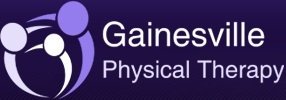Gait and Balance Deficits
Brain damage is a common cause of weakness and loss of control over the muscles in the arms and legs. The primary reasons for brain damage include stroke and traumatic brain injuries. While 50-70% stroke survivors regain functionality and become independent, many are permanently disabled. Disability may include difficulty in swallowing or talking, pain, thinking difficulties or memory loss, emotional and behavioral problems, and gait problems.
Types of gait difficulty
The common gait conditions associated with stroke or brain injury include
- Ataxia (muscles work but movements are poorly timed)
- Dyspraxia (inability to coordinate and perform specific movements)
- Spasticity (painful muscle contractions)
- Contractures (shrinking of muscles), which can make balancing and doing simple tasks difficult
- Paralysis (loss of ability to move) of the limbs is one of the common conditions resulting from a stroke or brain injury. It can be partial or complete depending on the damage.
These conditions are characterized by muscles that lose their strength and their inability to support the body’s weight, maintain balance, and help in moving forward. Hemiplegia is the most common form of gait deformity and has been studied extensively to find suitable recovery and rehabilitation measures.
Diagnosis
A physical therapist will review your medical history and analyze your gait to order specific and related treatment options. You may be asked to walk across a room to note your posture, positioning of feet, coordination, and momentum. Additional tests that measure range of motion, balance and muscle strength may be ordered. Video cameras may be used to record observations, and computerized devices can be used to quantify balance and gait.
Treatment
Immediate rehabilitation programs can help you regain your strength and improve your mobility. An exclusive treatment plan will be designed for you by your physical therapist, including stretching and special exercises that will help you improve your strength, endurance, mobility and balance. An occupational therapist will most likely be involved in your care, to help you develop and regain function and skills needed to perform your activities of daily living.
Some of the treatments involved include:
- Modified constraint-induced therapy (mCIT). mCIT is a motor practice therapy, where your unaffected limb is restrained, and you are made to place more emphasis on your affected limb. This can stimulate the affected brain areas to take over their normal functions.
- Electrical stimulation.This mode of treatment has been used to improve sensory awareness. Small electrical pads are placed on your affected limb and an electric shock is passed. The shock activates your nerves and helps your muscles move. Your brain, in due course of time, may be able to recapture these movements and relearn them without the need for external stimulation.
- Cortical stimulation.This procedure is used as an effective way to regain mobility. A tiny electrode is used to stimulate a part of the brain called as cortex while you undergo rehabilitation exercises.
- Motor imagery. This is a mental practice that makes you imagine and rehearse the movement of your affected limb. This provides additional benefits to conventional physiotherapy and occupational therapy and activates the parts of the brain and the muscles involved as if you are actually doing an activity. This makes the network of nerves in the brain involved in visualization and physical movement coincide, making this an effective therapy when combined with other therapies.
- Robotic-assisted gait training. These are becoming a popular choice in stroke rehabilitation. In addition to conventional physical therapy, robotic devices can help make specific desirable changes to your gait pattern and improve your balance.
Management
Along with rehabilitation, your physical therapist will recommend several home exercises, orthotics, and assistive aids that can help increase your balance and mobility. You will be trained in making simple lifestyle changes, like being active and paying close attention while walking, to help you balance and move better and encourage a healthier recovery.





